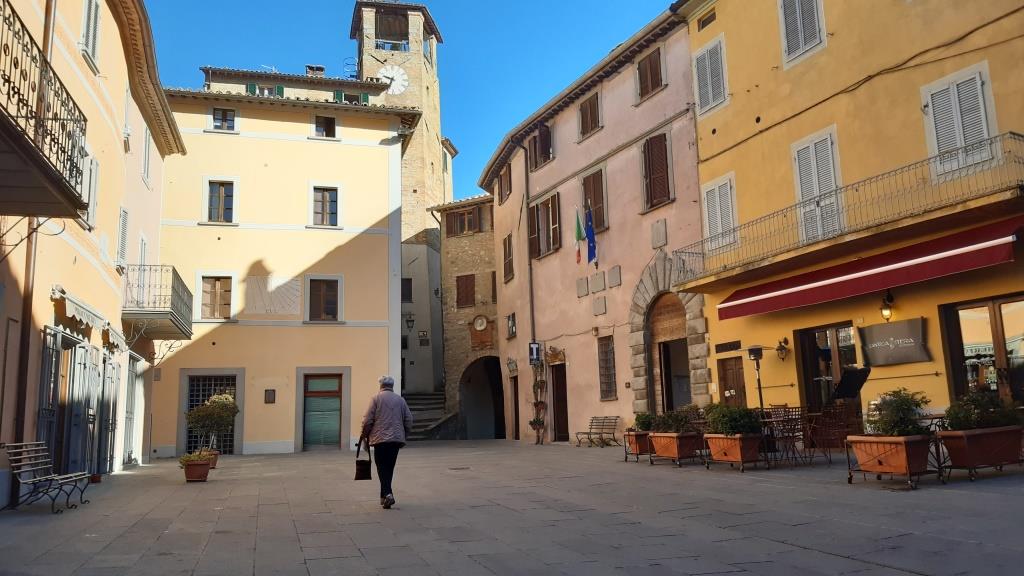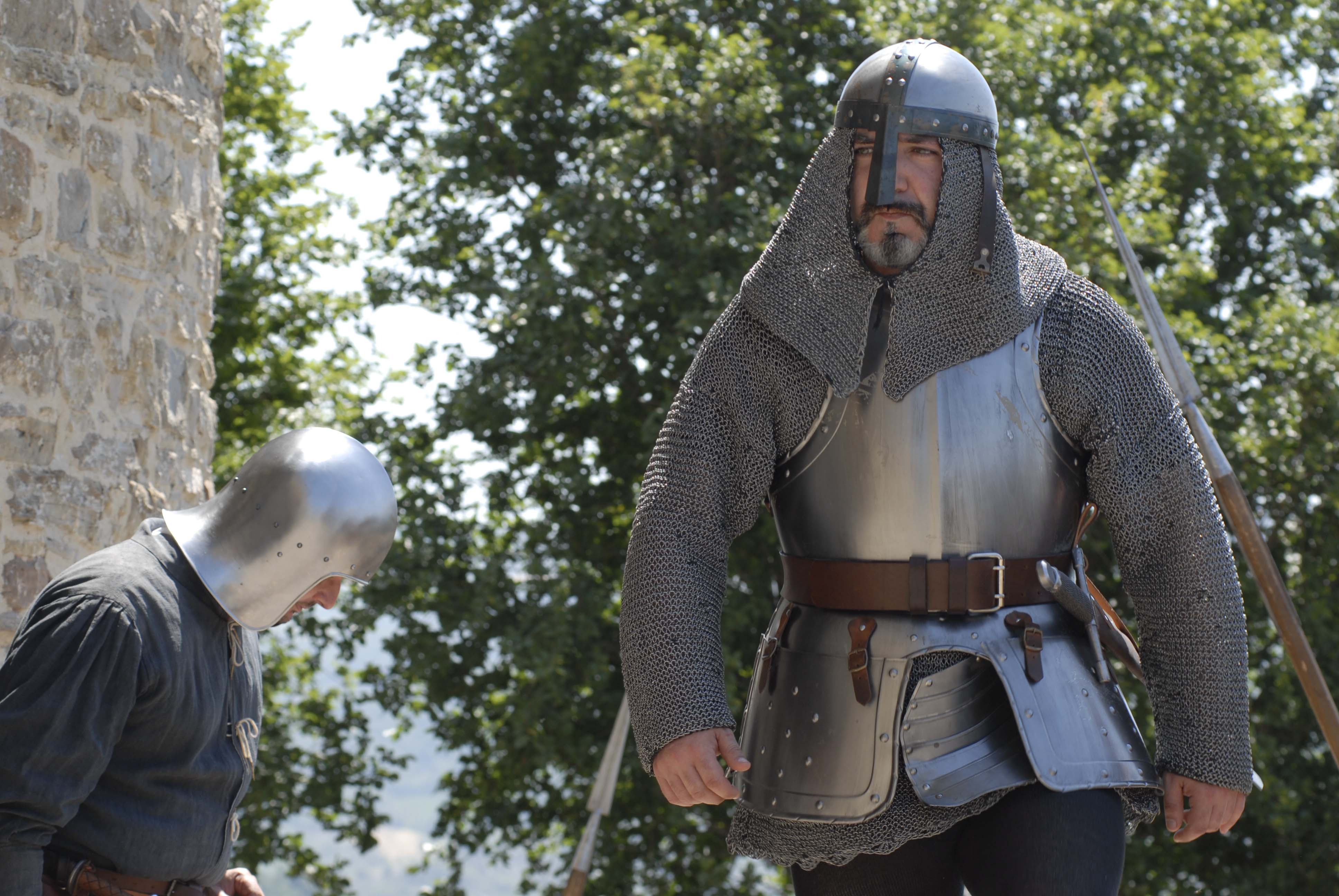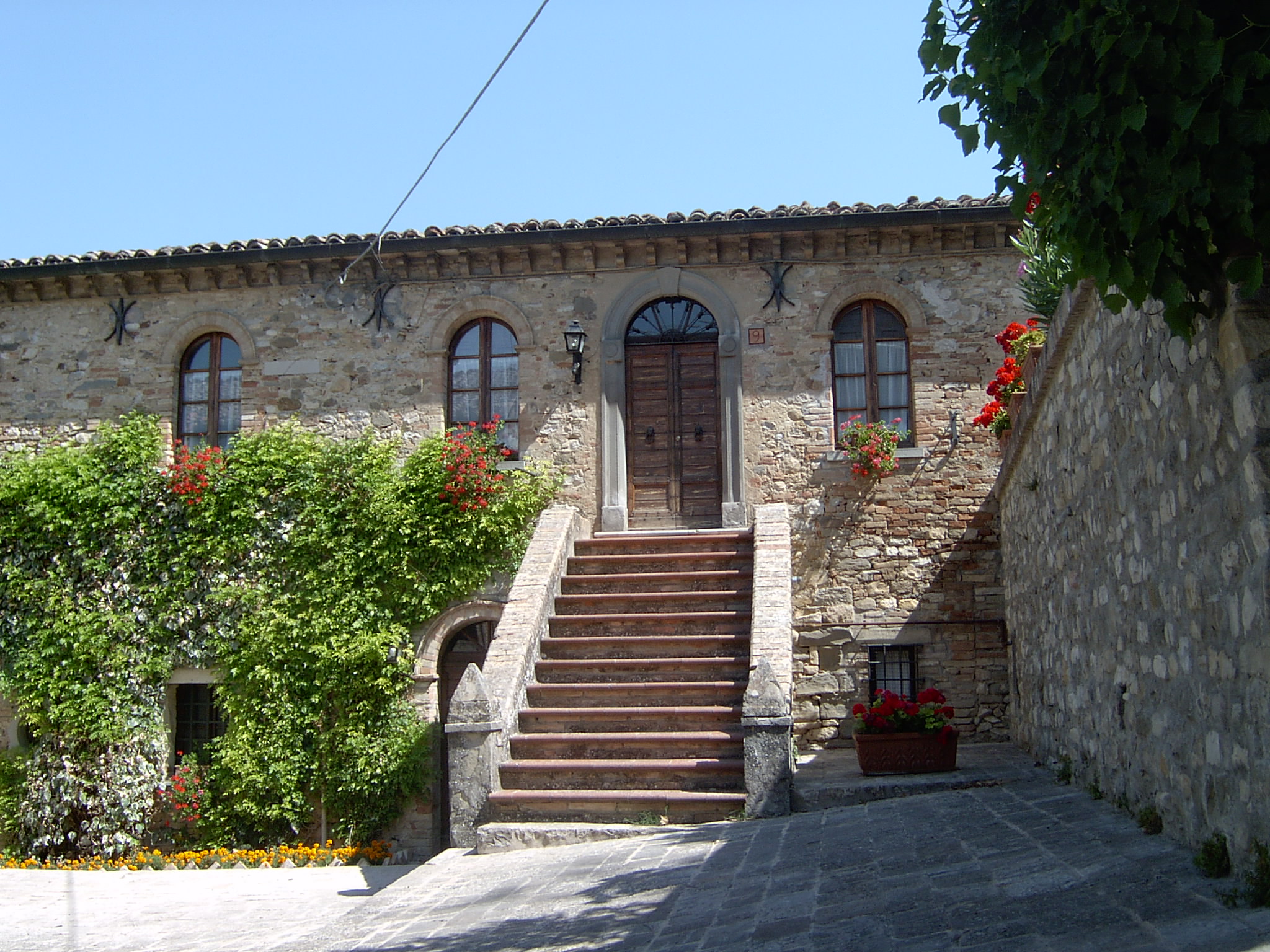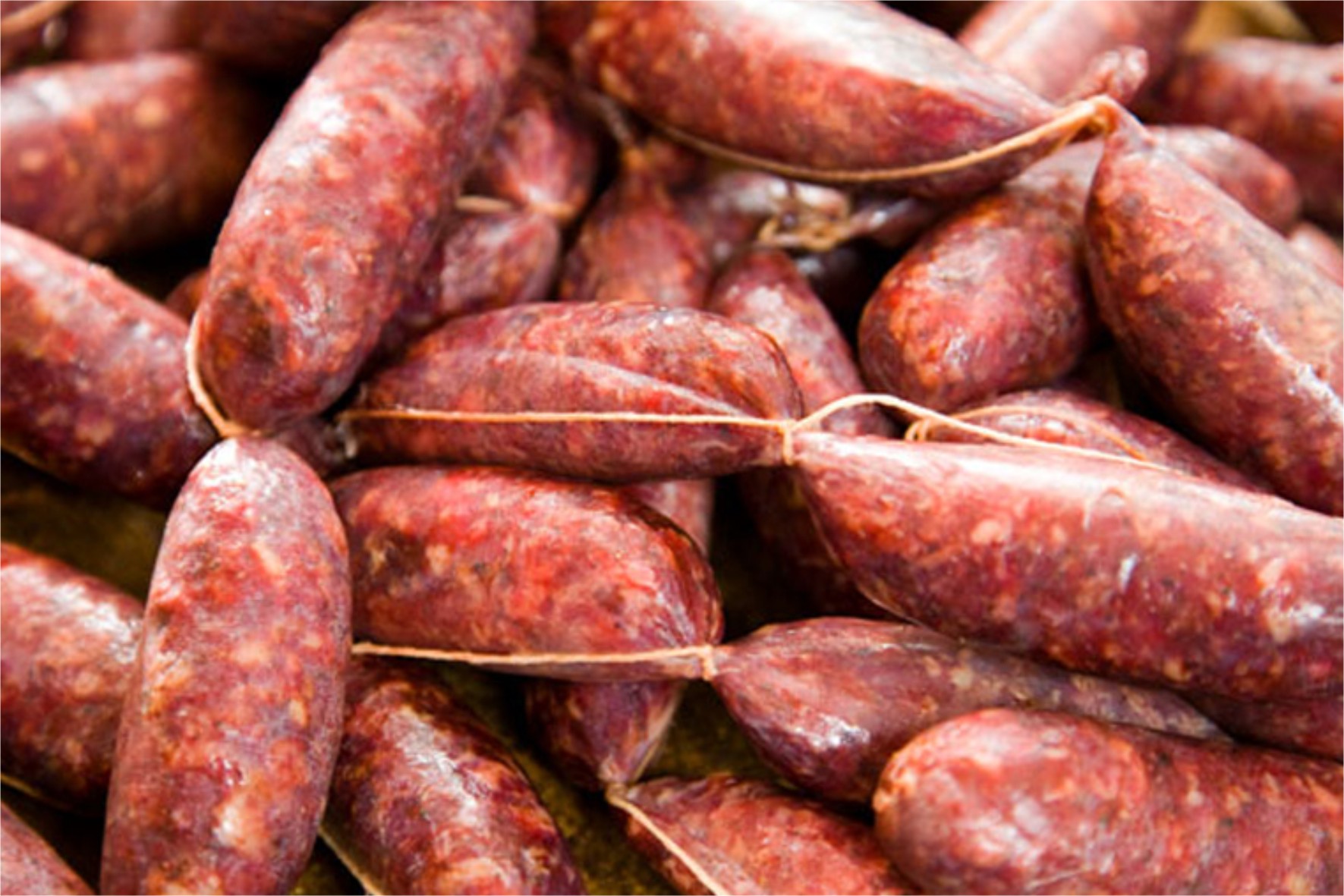
MONTONE
Montone è un grazioso borgo umbro di origine medievale che sorge su di un colle a dominare la Valle del fiume Carpina e l’Alta Valle del Tevere. Inserito tra “Les plus beaux villages de la terre”, Bandiera Arancione del Touring Club Italiano, rappresenta l’idea classica del borgo medioevale, perfettamente conservato ed immutato nei secoli. Montone può essere definito un monumento a cielo aperto proprio per l’integrità e la coerenza degli stili architettonici che immergono il visitatore in un’atmosfera fuori dal tempo. Le sue origini sono collocate tra il IX e il X secolo d.C. A cavallo fra il XIV e il XV secolo è stato teatro delle vicende storiche legate alla famiglia Fortebracci ed è patria del condottiero Andrea Fortebracci detto Braccio da Montone. L’edificio di maggior pregio artistico di Montone è la gotica Chiesa di San Francesco (XIV secolo), all’interno della quale sono presenti numerosi affreschi di scuola umbra. La chiesa è parte del Polo Museale di Montone, dove è possibile ammirare pitture, argenti e paramenti sacri di grande valore artistico (di pregio le due opere di Bartolomeo Caporali risalenti alla fine del ’400: la “Madonna della Misericordia” e il “Sant’Antonio”). Altro importante edificio religioso è la Pieve di San Gregorio, la chiesa più antica di Montone, costruita intorno all’anno 1000 in stile romanico-bizantino. Montone possiede oltre al Polo Museale altri due poli culturali molto importanti: il Polo di Santa Caterina, ex convento sede della biblioteca e dell’archivio storico, e il Polo di San Fedele dove si trova l’auditorium e il piccolo teatro omonimo nel quale viene organizzata ogni anno una stagione teatrale che raccoglie danza, musica e spettacoli di prosa.
MONTONE
Montone is a lovely Umbrian town of Medieval origin which rises on a hill dominating the valley of the Carpina River and the Upper Tiber River Valley. Named among “Les plus beaux Villages de la Terre” and “Borghi piu belli d’Italia” and the orange flag of the Touring Club, it represents the classical idea of a medieval village conserved and unchanged over the centuries. Montone can be defined as an open air monument simply for the integrity and coherence of the architectural styles that immerse visitors in an atmosphere that is out-of-date. Its origins are between the IX and the X centuries A.D. At the end of the XIV century and beginning of the XV century it was the stage of the historical events tied to the Fortebracci family and is the homeland of the conductor Andrea Fortebracci called Braccio da Montone. The most prestigious artistic building of Montone is the Gothic Church of San Francesco (XIV century), inside of which are
numerous frescoes in Umbrian style. The church is part of the Centre for Museums in Montone, where you can admire sacred paintings, and liturgical elements and vestments of great artistic value (of great worth are the two works of Bartolomeo Caporali coming from the end of the 400s: the “Madonna della Misericordia” and the “Sant’Antonio”). Another important religious building is the Pieve San Gregorio, the oldest church in Montone, built around the year 1000 in Romantic –Byzantine stye. Apart from the Centre for museums, Montone is home of another two cultural centres of great importance: The Centre for Santa Caterina, ex-convent home of the library and the historical archives and the Centre of San Fedele where you can find the auditorium and the small theatre in which every year there is a theatrical calendar for the season holding dance, music and theatrical performances.

BRACCIO DA MONTONE
Nel luglio del 1368 nacque a Montone il più noto della famiglia Fortebracci, Andrea detto poi Braccio da Montone, che, oltre ad essere uno dei più celebri capitani di ventura nominato più volte ne Il Principe di Machiavelli, ebbe la lungimiranza di operare per la nascita di uno stato unico che avesse come capitale Perugia. Nonostante le indubbie doti di stratega e di politico, alla sua vita ed ai suoi ideali fu tragicamente posta fine, tradito dal Piccinino, suo più fidato alleato, durante la Battaglia de L’Aquila nel 1424. Montone, come buona parte dell’Italia centrale, fu quindi definitivamente assoggettata alla chiesa.
BRACCIO DA MONTONE
In July 1368 the most important person in the Fortebracci family was born, Andrea otherwise known as Braccio da Montone, who besides being one of the most famous captains of fortune named several time in The Prince of Machiavelli, had the foresight to work for the birth of a single nation that would have Perugia as its capital. Notwithstanding his unquestionable gifts of strategy and politics, his life and his ideals had a tragic end when, betrayed by Piccinino, his most trusted ally, during the Battle of Aquila in 1424. Montone, as the majority of central Italy, and ultimately became subject to the church.
LA ROCCA
La Rocca di Montone, progettata dall’architetto bolognese, Fioravante Fioravanti, su richiesta di Andrea Braccio Fortebracci, doveva simboleggiare l’importanza e la forza della sua famiglia su tutto il territorio circostante. La costruzione risale agli inizi del XV secolo. Della Rocca, distrutta nel 1478 per volere dell’allora Papa Sisto IV, si conserva l’immagine dipinta dal Caporali ai piedi della “Madonna della Misericordia” nel 1482 per il convento dei frati minori di San Francesco, e che oggi è conservato nella pinacoteca comunale.
THE FORTRESS
The Fortress of Montone, designed by a bolognese architect Fioravante Fioravanti, by request of Andrea Braccio Fortebracci, was meant to symbolize the importance and strength of his family in all the surrounding territory. The construction began at the beginning of the XV century. A picture-painting has been kept of the Fortress, which was destroyed by request of then Pope Sisto IV, by Caporali at the feet of the “Madonna della Misericordia” in 1482 for the convent of the Friars Minor of San Francesco and that today is held in the Pinacoteca comunale.
DONAZIONE DELLA SANTA SPINA
La settimana che precede la penultima domenica di agosto il borgo di Montone diventa un teatro a cielo aperto in cui va in scena una rievocazione storica tra le più interessanti dell’Umbria: “La Donazione della Santa Spina”, tanto da avere anche il riconoscimento del patrocinio della Commissione Nazionale Italiana per l’ UNESCO. A Montone fervono gli ultimi preparativi per rendere tutto perfetto affinché il Medioevo torni a rivivere in tutto il suo splendore all’interno delle antiche mura. L’atmosfera viene ricreata attraverso rappresentazioni teatrali nelle vie del borgo ambientate nel XV secolo, gare fra arcieri, sbandieratori e tamburini, ricchi e pregiati costumi storici che riportano i cittadini montonesi e i turisti indietro nel tempo, alla corte dei Fortebracci. La regia dell’evento è della Pro Loco Montonese. La Donazione della Santa Spina è la rievocazione di un fatto realmente accaduto nel 1473, nel borgo medioevale di Montone, quando il condottiero Carlo Fortebracci, figlio di Braccio da Montone, combattendo per la Repubblica di Venezia, riuscì a cacciare i Mori dai confini veneti. Per l’appoggio leale sul campo di battaglia ebbe in compenso una Spina della corona di Gesù Cristo che a sua volta portò in dono al popolo di Montone. La Santa Spina, posta dal 1635 in un bellissimo reliquiario d’argento, finemente cesellato e restaurato di recente, viene oggi custodita dalle suore del Convento di S. Agnese ed è esposta due volte all’anno: ogni Lunedì dell’Angelo e la penultima domenica di agosto.
GIFT OF THE HOLY THORNS
In the week before the last Sunday of August, the village of Montone becomes an open-air theatre in which a historical reenactment goes on stage, among the most interesting in Umbria: “La donazione della Santa Spina” (The gift of the Holy Thorn), so much so that the representative of the National Italian Commission of UNESCO gave a special recognition. In Montone the last preparations were in full swing to make everything perfect so that the Medieval would come back to life in all its splendor within these city walls. The atmosphere was recreated by theatrical representations in the streets of the village set in the XV century, competitions between archers, flag wavers and tambourine players, rich and rare historical costumes, which bring the montonese citizens and tourists back in time, to the courts of the Fortebracci family. The organization of the event is done by the Pro Loco Montonese. La donazione della Santa Spina is the reenactment of a historical event that happened in 1473, in the medieval village of Montone, when the captain Carlo Fortebracci son of Braccio da Montone, fighting for the Republic of Venice, managed to push the Mori out of the Venetian borders. In order to have a loyal support on the battlefield, one Thorn of the Crown of Jesus Christ was given in return as a gift to the people of Montone. The Sacra Spina, in 1635 was placed in a beautiful silver shrine, finely engraved and restored recently, and today is kept by the nuns in the Sant’ Agnese Convent and is on display twice a year, every Easter Monday and the second to last Sunday in August.

UMBRIAFILMFESTIVAL
La rassegna Umbria Film Festival rappresenta senza dubbio il fiore all’occhiello del piccolo Borgo di Montone. Questo evento di respiro internazionale grazie alla direzione artistica di Terry Gillam, cittadino onorario di Montone, ospita ogni anno registi e attori di fama mondiale. La manifestazione viene organizzata dall’associazione Umbria Film Festival Onlus e dal comune di Montone. Le anteprime nazionali ed internazionali dei film vengono proiettate nella suggestiva Piazza Fortebraccio davanti ad un pubblico attento in un’atmosfera incantevole. Lo scopo dell’associazione è quello di promuovere l’arte cinematografica attraverso attività di formazione e di informazione sulla settima arte. In ogni edizione un filo conduttore fa da sfondo alle varie proiezioni di lungometraggi e cortometraggi per adulti e bambini. www.umbriafilmfestival.com Scopri di più nel nostro approfondimento dedicato!
UMBRIAFILMFESTIVAL
The Umbria Film Festival without a doubt represents the feather in the cap for the small village of Montone. This event of international level thanks to the artistic direction of Terry Gillam, honorary Citizen of Montone hosts world famous directors and actors every year. The festival is organized by the Umbria Film Festival Onlus association and the town of Montone. The National and International previews of films are projected in the evocative Fortebraccio Square in front of an attentive public in an enchanting atmosphere. The aim of the association is that of helping cinematic art through events for education and information about the seventh art. In every edition the central thread is the background for various projections of short and full length films for adults and children.www.umbriafilmfestival.com.
RASSEGNA BANDE MUSICALI
Una delle rassegne bandistiche più longeve dell’Umbria, creata dalla Filarmonica Braccio Fortebraccio di Montone. Offre un vasto panorama artistico di gruppi bandistici italiani e stranieri.
MUSICAL BANDS SHOW
One of the longest-living band shows in Umbria,created by the Braccio Fortebraccio Filharmonic of Montone. It offers a vast artistic scenery of Italian and foreign bands.
LA FESTA DEL BOSCO
Cibi biologici e prodotti tipici delle aziende locali sono i protagonisti della Festa del Bosco, una prestigiosa mostra-mercato all’aperto per i vicoli del paese che si tiene ogni anno alla fine di ottobre e comprende la festività di Ognissanti, 1 novembre. In questa occasione si ha la possibilità di degustare prodotti naturali del bosco e del sottobosco quali mirtilli, more lamponi, funghi, tartufi, miele e castagne. Durante l’evento è possibile assistere a numerosi spettacoli di intrattenimento nelle vie e piazze del paese. Caratteristica principale della Festa del Bosco sono gli spazi espositivi: cantine e fondi privati e pubblici diventano luoghi magici in cui degustare i prodotti a chilometro zero nella bellissima cornice del centro storico di Montone.
FESTA DEL BOSCO
Organic food and typical products from local firms are the main protagonists of the “Festa del Bosco”, a prestigious open air Market- Exhibition in the alleyways of the village that is held every year at the end of October and is during All Saints Day the 1st of November. On this occasion you have the possibility of tasting natural products from the wood and under the wood such as blueberries, blackberries, raspberries, mushrooms, truffles, honey and chestnuts. During the event it is possible to see numerous entertaining shows in the streets and squares of the village. The main characteristic of the “Festa del Bosco” are the expository spaces: basements and cantines both private and public become magic places to taste the products at zero kilometers in the beautiful frame of the historical centre of Montone.
ENOGASTRONOMIA
In un territorio come quello di Montone, così legato alle tradizioni e così ricco di prodotti naturali,non potevano mancare una serie di ricche proposte gastronomiche che, pur nella loro semplicità di esecuzione, racchiudono tutta la sapienza di un popolo legato ai sapori genuini di un tempo. Dalla semplicissima torta bianca cotta sul “panaro”, all’imbrecciata, che si serviva tradizionalmente nei mesi invernali, ai raffinatissimi piatti di pasta fatta in casa, impreziositi da tartufo, funghi o asparagi. I vini rappresentano un’altra voce importante per il territorio, così come l’olio.
WINE AND FOOD
In an area like that of Montone, so tied to traditions, so rich in natural products, it was impossible not to have a series of rich food suggestions, though simple to make, that contain all the knowledge of a people tied to the genuine tastes of times past. From the simple “torta bianca” (a kind of focaccia) cooked on the “panaro” ( a special kind of pan over a flame) to the imbrecciata (a type of soup) that is traditionally served during the winter months, at the refine dishes of hand-made pasta, crowned with truffles, mushrooms or asparagus. The wines represent another important voice for the territory, as is oil.

PRESIDIO SLOWFOOD
Mazzafegato dell’Alta Valle del Tevere
L’odore inconfondibile del finocchio e il colore scuro delle carni insaccate rappresentano le peculiarità del mazzafegato umbro che ha la sua origine nell’Alto Tevere, nella zona al confine con la Toscana. Parente povero della salsiccia è frutto dell’esperienza e della storia della norcineria casalinga di ogni famiglia del territorio montonese. La tradizionale produzione del mazzafegato e la diffusione di questo particolare insaccato oggi è affidata a poche aziende dell’Alto Tevere di cui una nel territorio di Montone, presso la quale si può assaggiare questo tipico salume durante tutto l’anno.
SLOWFOOD CENTRE
Mazzafegato (pork liver sausage) from the Upper Tiber River Valley
The unmistakable smell of fennel and the dark colour of the cured meats represent the peculiarity of the Umbrian pork liver sausage which has its origins in the Tiber Valley, in the areas bordering Tuscany. Poor relative of the sausage it is the result of the experience and the history of the homemade curing of meats of every family of the Montone area. The traditional production of the pork liver sausage and the diffusion of this particular cured meat today is entrusted to few companies in the Tiber Valley one of which is in the Montone territory, where you can taste this typical meat all throughout the year.







